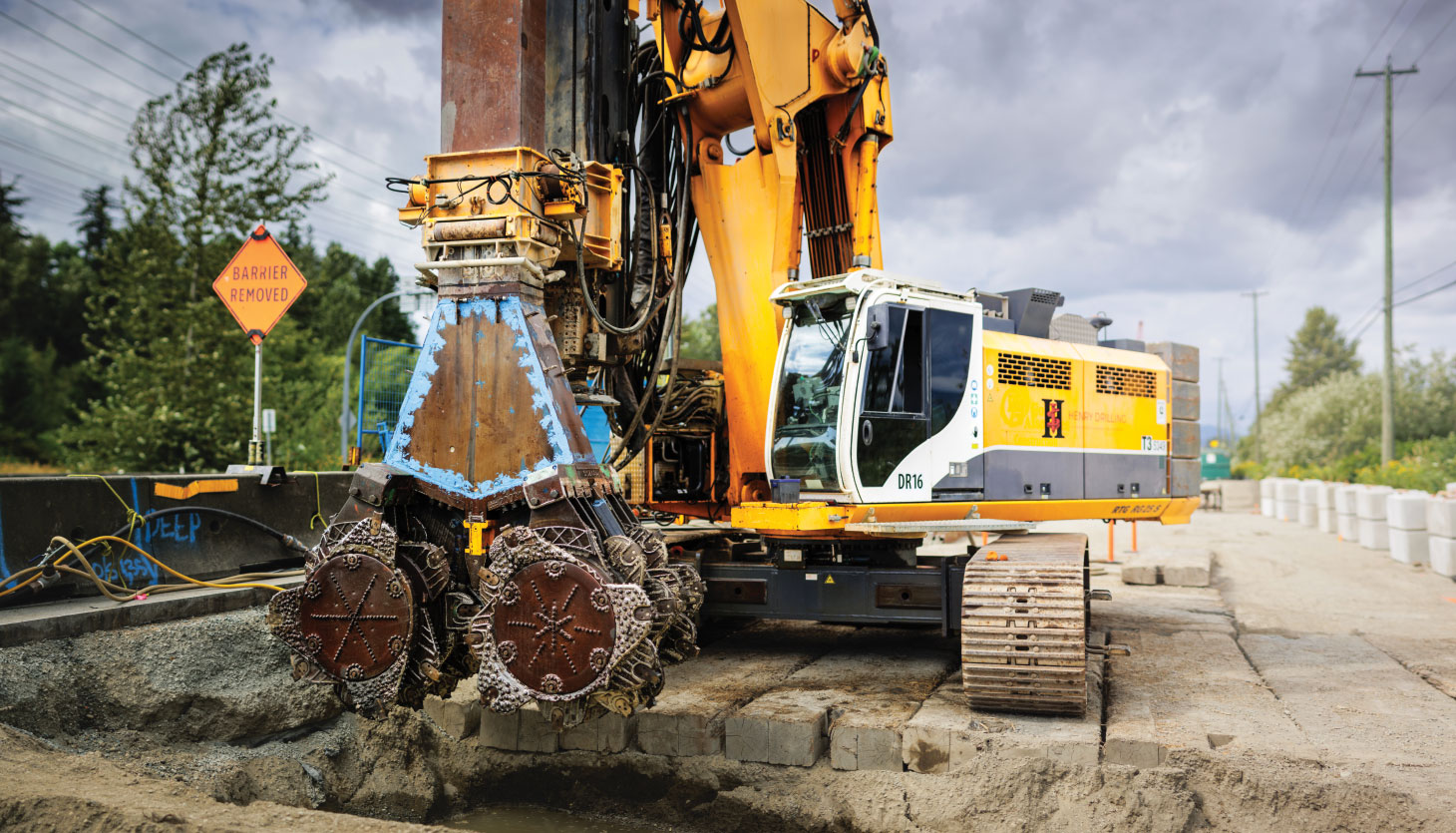
The 2021 Pacific Northwest floods were a catastrophic event that severely impacted British Columbia and parts of Washington state. Unrelenting rains caused widespread flooding and landslides, with some areas experiencing the worst flooding in a century.
This led to an urgent need to restore critical infrastructure, including highways, bridges and transportation corridors. The flooding caused significant damage to the region’s vital transportation routes, including major highways such as Highway 11, a crucial artery connecting Abbotsford and other parts of the Fraser Valley.
Among the hardest-hit areas was the Willband Creek section of Highway 11, where extensive flooding caused significant instability. As floodwaters surged through the area, they displaced soil and other materials used to support the highway, creating serious risks of structural failure.
Ground conditions and the need for innovation
Henry Foundation Drilling Inc., based in Langley, B.C., was contracted by Lafarge Canada Inc., the general contractor, to stabilize this section of Highway 11 by applying innovative ground improvement techniques, ensuring the long-term structural integrity of the roadway.
Jared Poirier, Henry Foundation Drilling’s senior project manager, says the ground conditions at Willband Creek posed significant challenges for the engineering team tasked with restoring the highway. The soil beneath the highway consisted of a variety of materials, including organic peat, silt, sand and more, which made it highly unstable when saturated by the floodwaters. The EPS foam blocks beneath the roadway – originally placed to provide support – were lifted by the floodwaters causing sections of the highway to lift, crack and shift out of alignment.
Poirier says the goal was not only to repair the damage, but also to stabilize the soil beneath the highway, providing a permanent repair to ensure that the foundation would withstand future flooding and other extreme weather events. This required a comprehensive approach that involved multiple stabilization techniques including deep soil mixing (DSM) combined with cutter soil mixing (CSM) to improve the engineering properties of the soil.
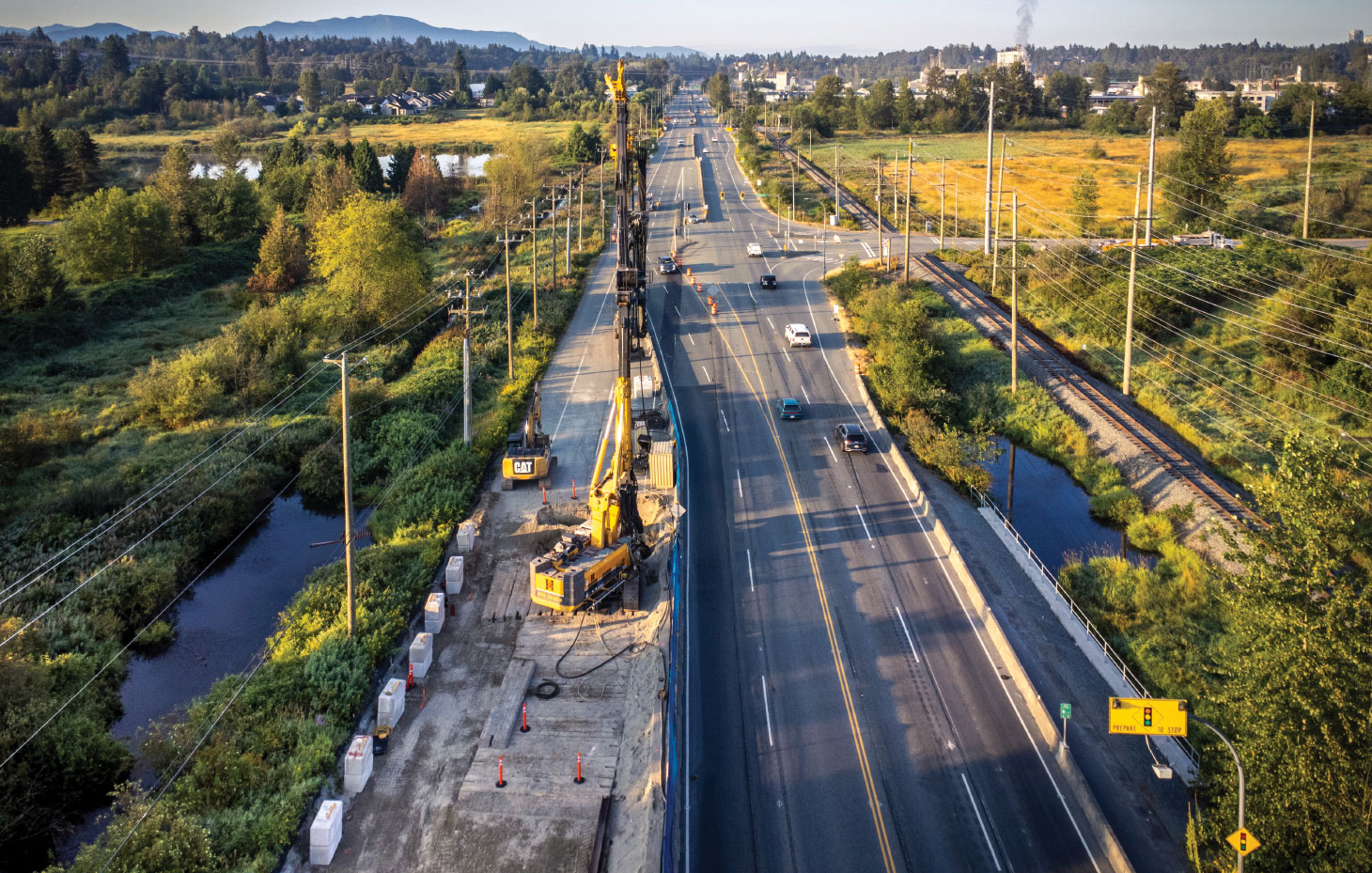
“The key challenge was the variability of the soil conditions,” said Poirier. “The floodwaters had displaced EPS foam blocks, and we were faced with a mix of organic peat, silts and sands. Each of these materials required careful consideration and a customized stabilization plan. A one-size-fits-all approach wouldn’t work here. Our solution needed to address the unique characteristics of each layer of soil.”
The solution involved the installation of deep barrettes and shallow soil cement mixing to provide both vertical and horizontal stabilization across the site. These methods were essential to reinforcing the highway’s foundation and preventing future failures. The use of barrettes played a critical role in stabilizing the highway foundation. Henry Foundation Drilling installed 27 barrettes, which ranged from 3.5 metres to 17.5 metres deep, depending on the soil conditions in each area. These deep foundations were used to anchor the roadbed and provide a robust support system that could distribute the weight of the highway evenly across the soil, reducing the risk of future settlement or shifting.
Installing the barrettes was a highly technical process, requiring precision to ensure proper alignment and depth. The engineers also had to consider the spacing between each barrette to ensure that the reinforced soil could support the weight of traffic while also being flexible enough to accommodate any future shifts in the ground.
Navigating a tight jobsite
To accomplish this, the project team used the Bauer RG25 CSM rig, a specialized piece of equipment capable of reaching depths required for the barrette installation. This rig was essential because of the difficult site access and the need to work within a limited footprint. The narrow construction area made it difficult to maneuver large equipment. The rig’s design and capabilities allowed the team to complete the task more efficiently than using larger equipment.
“One of the challenges we encountered was the soil variability. Some areas contained peat that was saturated, while others were more granular and sandier. Each soil type required a different binder mix and approach to ensure proper stabilization. The variability of the soil meant that our work was highly customized, and we had to adjust our techniques in real-time as we encountered new soil conditions,” said Poirier.
The precise method of installation and placement ensured that the barrettes were securely embedded in the soil, providing a solid foundation for the highway structure. The deep foundation effectively prevented future shifting by creating a continuous barrier that could resist the forces of water movement and soil displacement.
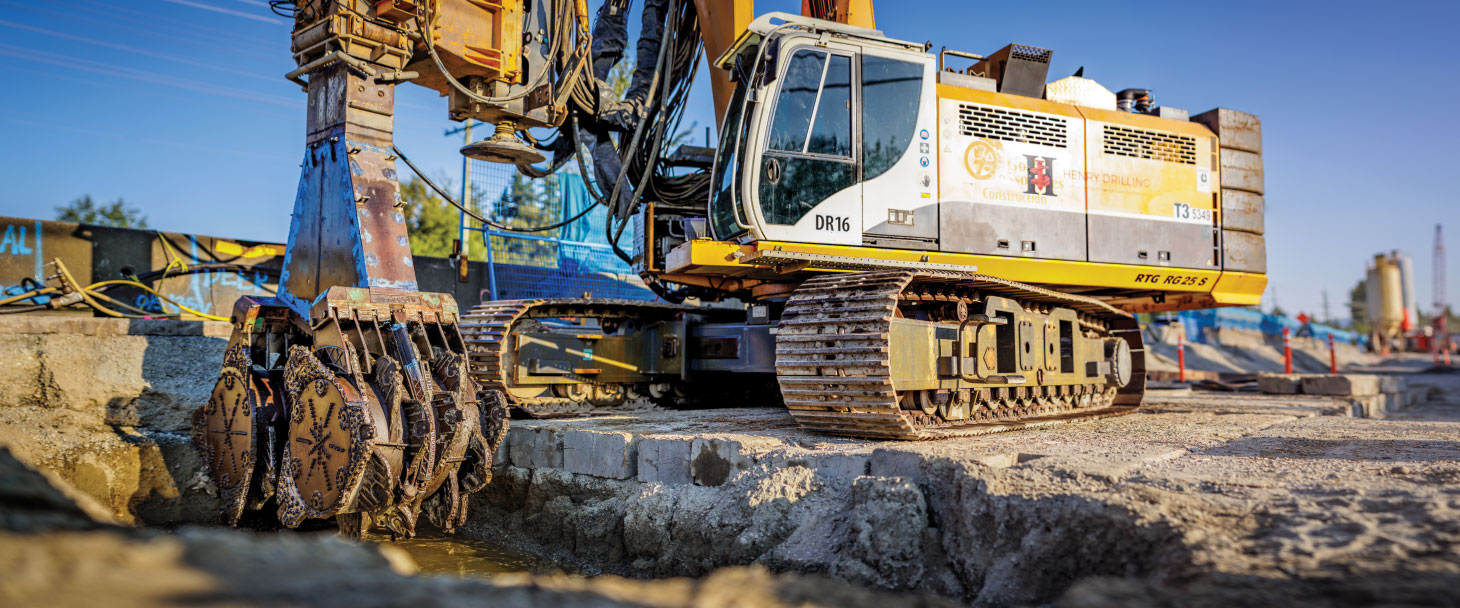
Henry Foundation Drilling also employed shallow soil mixing (SSM) techniques to further stabilize the area. SSM involves injecting a binder slurry into the soil at shallower depths to form a solid, cohesive mass that improves the soil’s load-bearing capacity. Poirier says the team used a precise approach, carefully calculating the layout and overlap of the mixing cells to ensure uniform stabilization across the site. The shallow mixing cells helped integrate the deeper barrettes, creating a continuous system of support that was critical to stabilizing the highway.
SSM was also crucial in mitigating the risks of future erosion or soil washout due to heavy rainfall. By creating a solid, interlocked mass of stabilized soil, the shallow mixing cells created a barrier that prevented oversaturation and collapse under load. The success of this method depended on precise control of the binder slurry and mixing process.
“We had to monitor the slurry mix carefully to ensure that it was neither too thick nor too thin. A perfect balance was needed to ensure that the binder fully penetrated the soil and formed a durable mass,” Poirier said.
Managing logistics and timeline
Aside from the technical challenges, the logistical complexity of the project was also considerable. The narrow worksite, combined with difficult site conditions, made it difficult to bring in materials and remove excess soil. Additionally, the project had to be completed quickly, as the highway is a major artery in the Fraser Valley and traffic disruptions needed to be minimized.
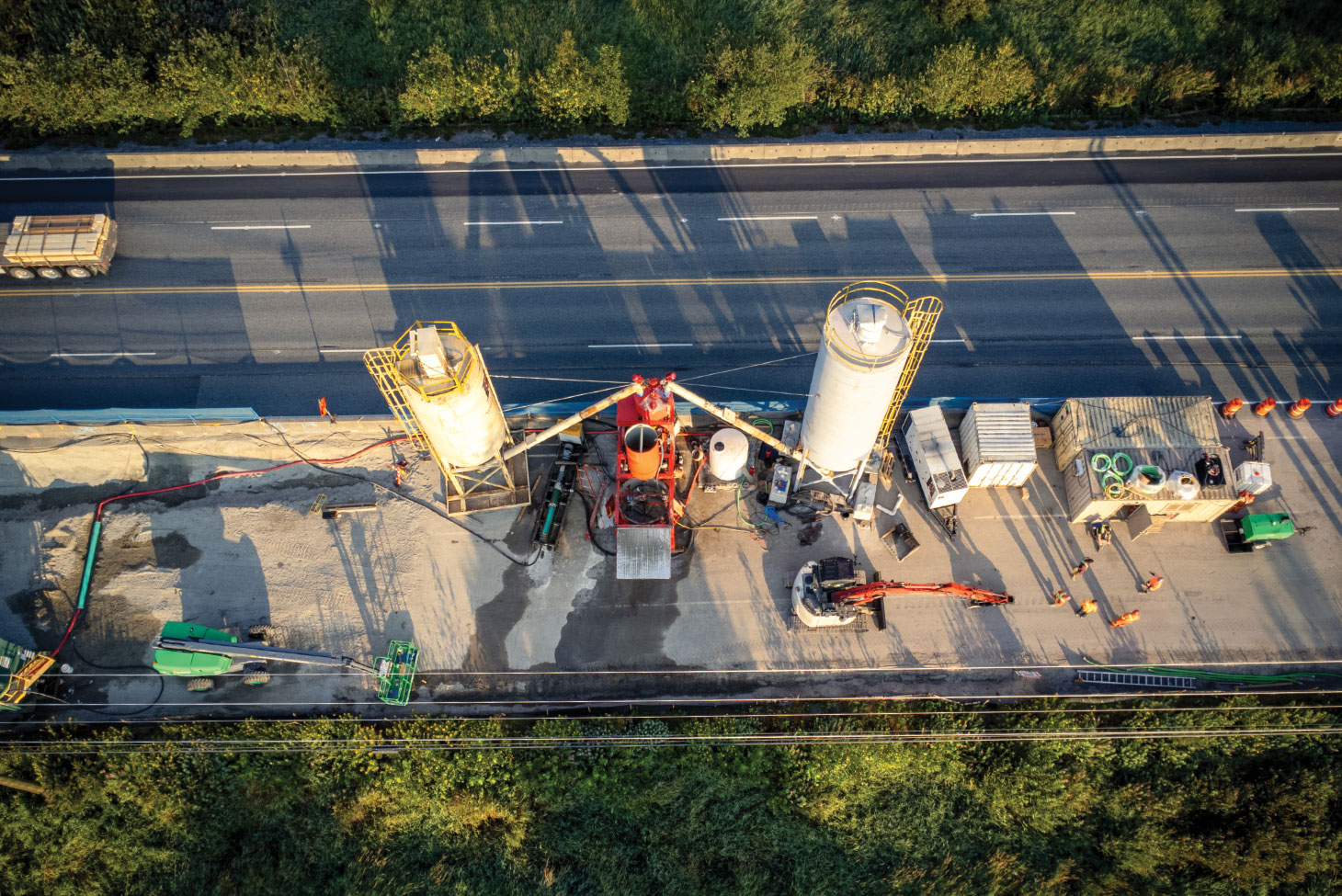
One of the most significant logistical hurdles was managing the removal of spoil and waste materials while minimizing disruption to the surrounding area. Henry Foundation Drilling had to carefully plan out sequencing for installation to maintain site access and remove spoil without delaying progress, all while maintaining a safe and controlled environment on-site. The team also employed mats and temporary roadways to improve access, ensuring that heavy machinery could maneuver the site safely considering the native ground conditions.
“Managing logistics on a site like this required close co-ordination with our team and the general contractor. We had to keep materials flowing efficiently while also ensuring that the site remained safe and stable throughout the project,” Poirier said.
Ensuring quality through rigorous testing
As the work progressed, the project team also faced the challenge of working in increasingly inclement weather. Fall rains further complicated the already difficult soil conditions, leading to significant water runoff and additional drainage issues. This required Henry Foundation Drilling and the general contractor to implement an ongoing dewatering plan to keep the site dry and maintain the stability of the soil.
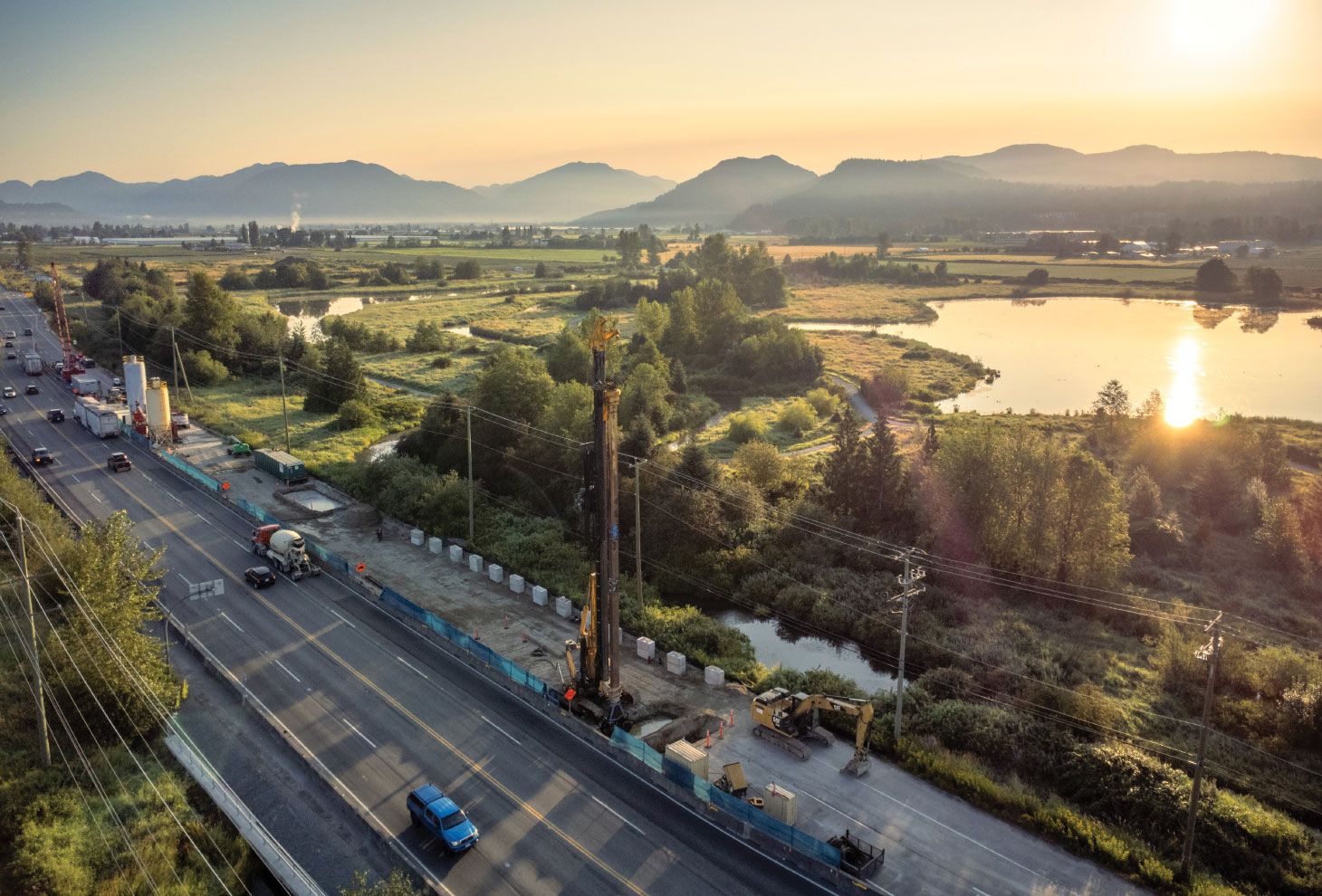
The stability of the soil and the overall quality of the work were monitored through rigorous testing protocols. To ensure stabilization met engineering standards, Henry Foundation Drilling conducted numerous specimen tests, including compression, flexural beam and core sample testing. These tests were designed to assess the compressive strength, tensile strength and overall integrity of the soil-cement mixture. A critical part of quality control was maintaining consistency in the soil-cement mixture. Poirier says it’s important to continuously monitor during the mixing and curing process to verify that the material was achieving the necessary strength to support the highway structure.
“The testing helped us verify that our stabilization efforts met the engineering requirements,” he said. “It also allowed us to make adjustments in real-time, ensuring the project’s success.”
Collaboration as a cornerstone
A key to the success of the project was the high level of collaboration among stakeholders. Henry Foundation Drilling worked closely with Lafarge Canada Inc., and the Ministry of Transportation and Infrastructure to ensure that the work met all regulatory and quality assurance standards. Camilo Ortiz, project co-ordinator, says that comprehensive documentation and co-ordination with testing agencies was vital to ensure accuracy and reliability in results.
“Proper tracking, daily supervision and training for the crew were essential, as well as training for everyone involved in handling the specimens and samples,” he said. “This was important to ensure not only the quality of the product and the installation of the barriers and panels, but also that we presented them correctly to the respective parties.”
The project was successfully completed on schedule, and the restored section of Highway 11 is now equipped with a solid, stable foundation that will help ensure its resilience in the face of future floods and extreme weather events. “The success of the job was largely dependent on the team we had involved, from our superintendents Justin Staniscia and Darcy Stanton, to our foreman Jordan Walker and the rest of the team, both on-site and off,” Poirier said.
Reflecting on the project, Poirier shared several lessons learned: “One of the biggest takeaways from this project was the importance of tailoring solutions to specific site conditions. Every job is unique, and flexibility in approach is key to success.”